Background
A vertically long or enlarged ear (macrotia) can result from several causes. Different regions of the ear may contribute to the enlargement—ranging from the middle concha and superior third crus cartilages to the lower third earlobe. To achieve an effective ear reduction, it is essential to identify the exact source of the enlargement so the correct surgical technique can be applied.
The most effective and aesthetically favorable reduction zones, producing the least scarring, are:
- The earlobe
- The upper third of the ear
- The middle third conchal area
An elongated earlobe alone can make the ear appear larger by increasing its vertical height. With age, and often from long-term earring use (particularly in women), the earlobe stretches as it is composed only of skin and fat, lacking cartilage. This age-related change creates a vertically long but still rounded earlobe.
A less common form of elongation is developmental in origin. During embryologic development, incomplete superior migration of the lower ear hillocks can result in a naturally long earlobe. Unlike the rounder, age-related version, this congenital type often appears more pointed, resembling the “pixie ear” deformity sometimes seen after facelift surgery, where excessive skin tension pulls the earlobe downward. In such cases, the earlobe takes on a v-shaped or pointy contour rather than a rounded one.
While long earlobes can be corrected with various reduction techniques, the pointed congenital type poses unique challenges.
Case Study
A male patient presented for facelift surgery with naturally long, pointed earlobes measuring 75 mm in vertical height. Given the improved jawline and neck definition expected from the facelift, the ears risked appearing disproportionately large. Additionally, well-positioned earlobes were important for effectively concealing facelift scars.
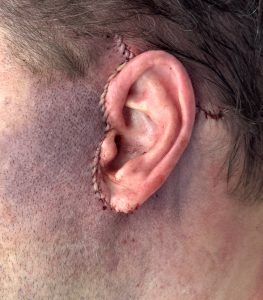
Outcome:
Postoperative ear height was reduced to 68 mm.
- Scars healed exceptionally well and were essentially invisible.
- The overall ear shape and balance with facial proportions improved significantly.
Key Insights
- A congenitally elongated earlobe closely resembles a pixie ear deformity that may follow a poorly done facelift surgery.
- This congenital condition results from incomplete superior migration of the lower hillocks during fetal development.
- Facelift surgery provides an ideal opportunity to shorten such earlobes, combining excision with flap rotation to minimize scarring.
Dr. Barry Eppley
World-Renowned Plastic Surgeon

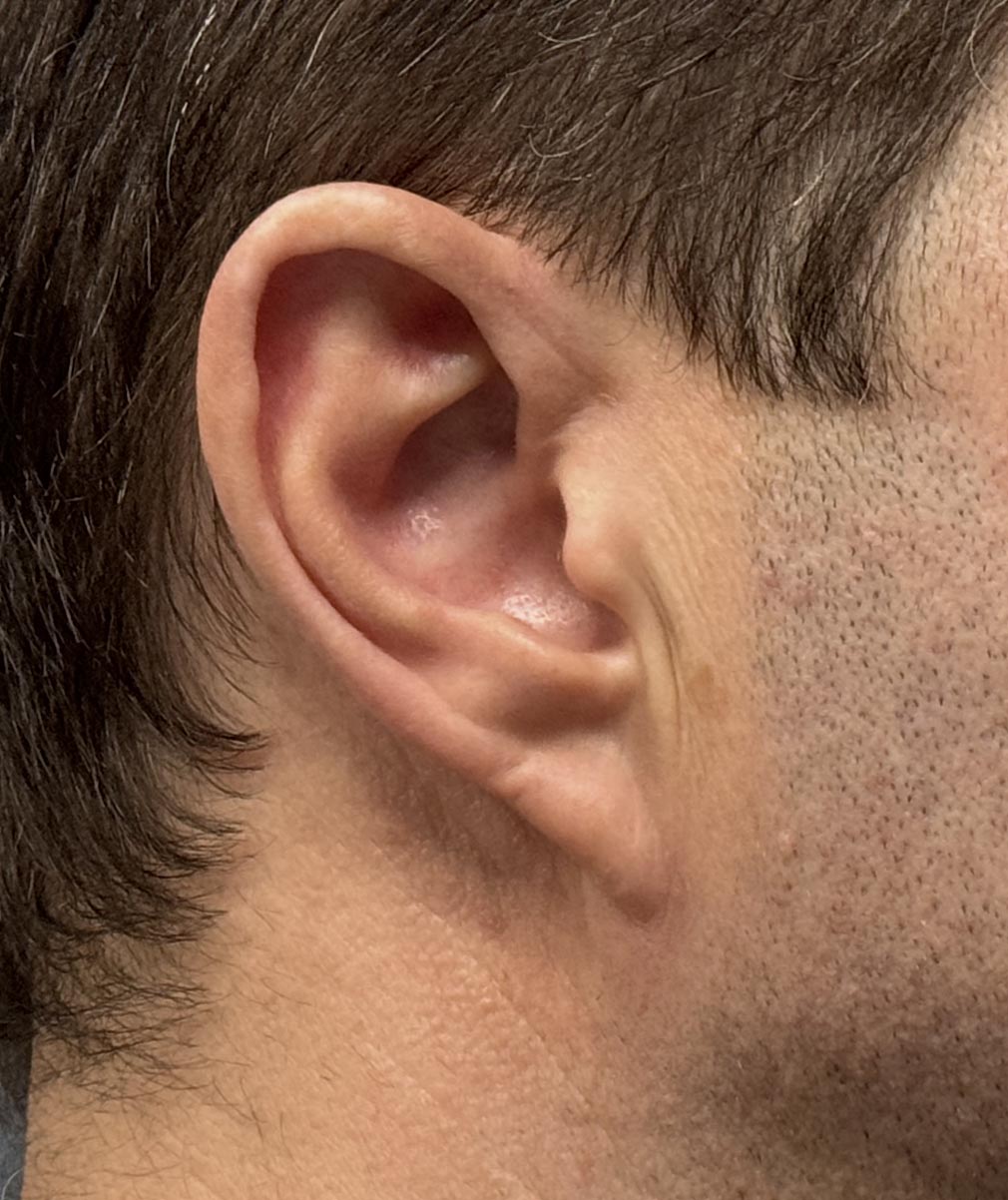

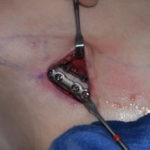
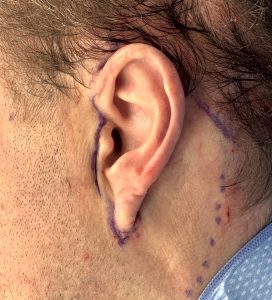
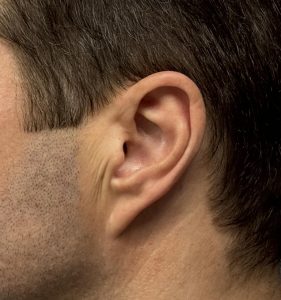
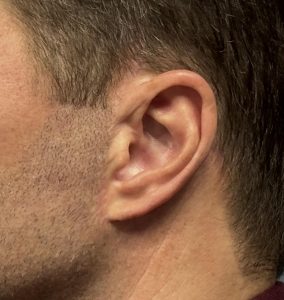
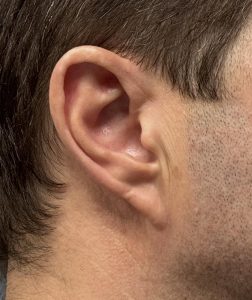
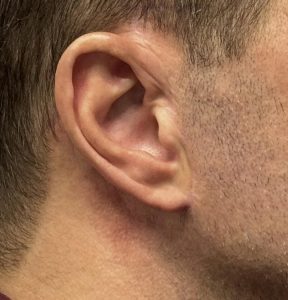 Postoperative ear height was reduced to 68 mm.
Postoperative ear height was reduced to 68 mm.